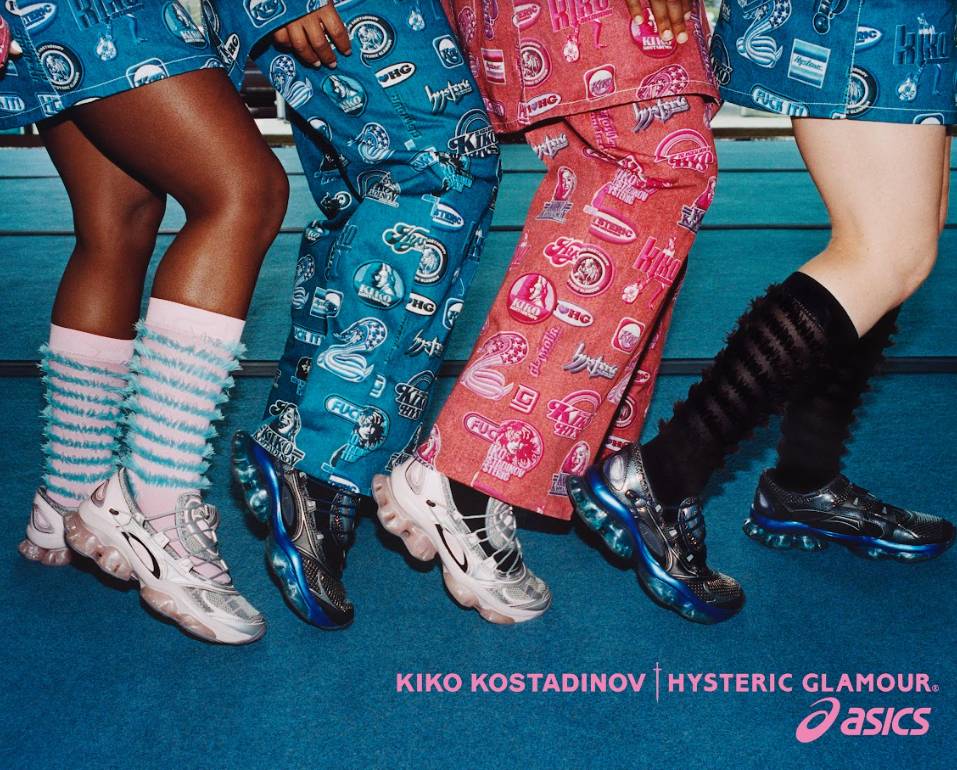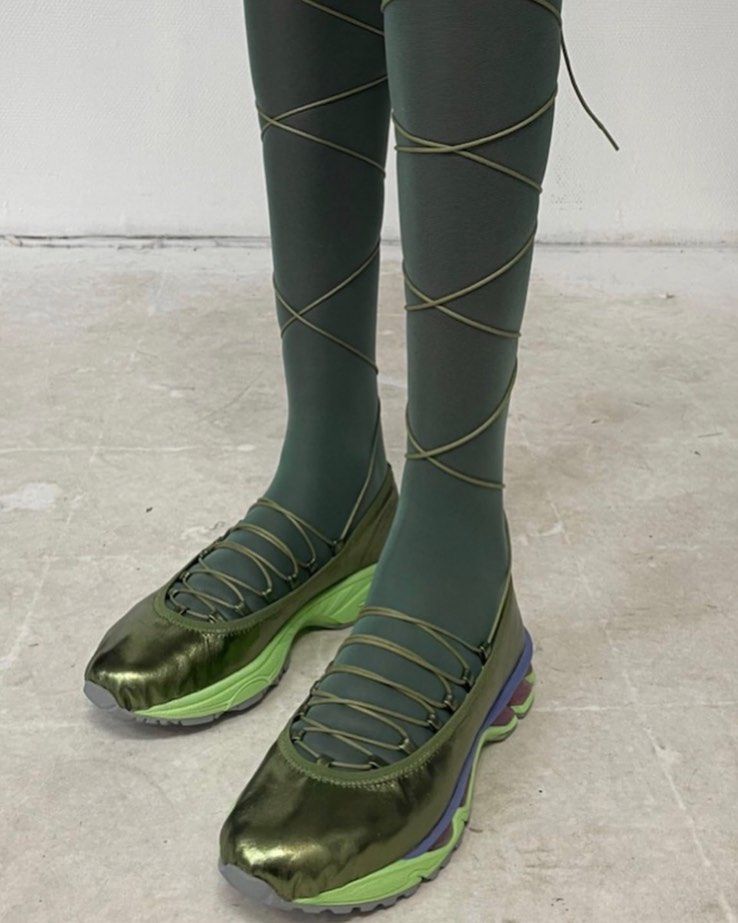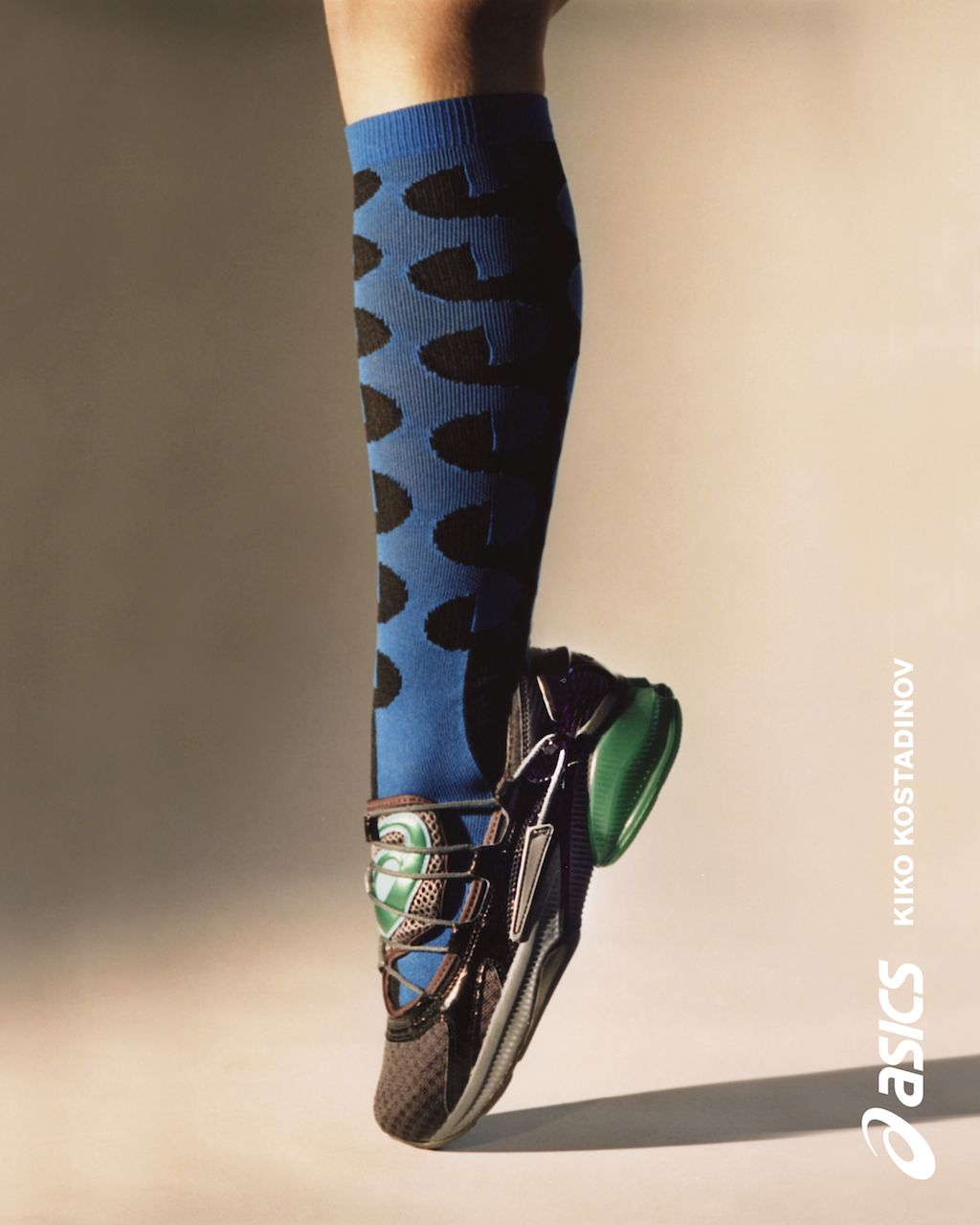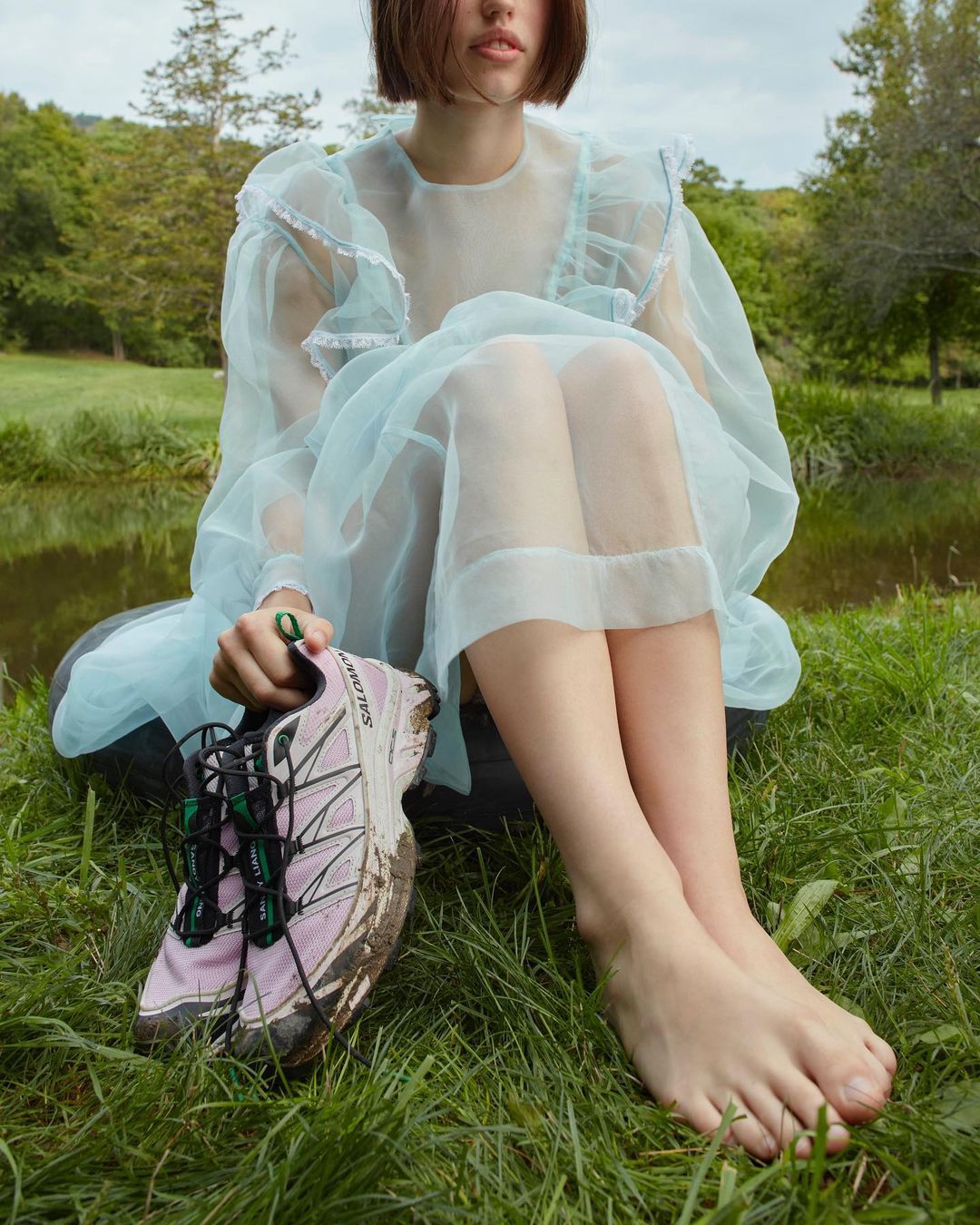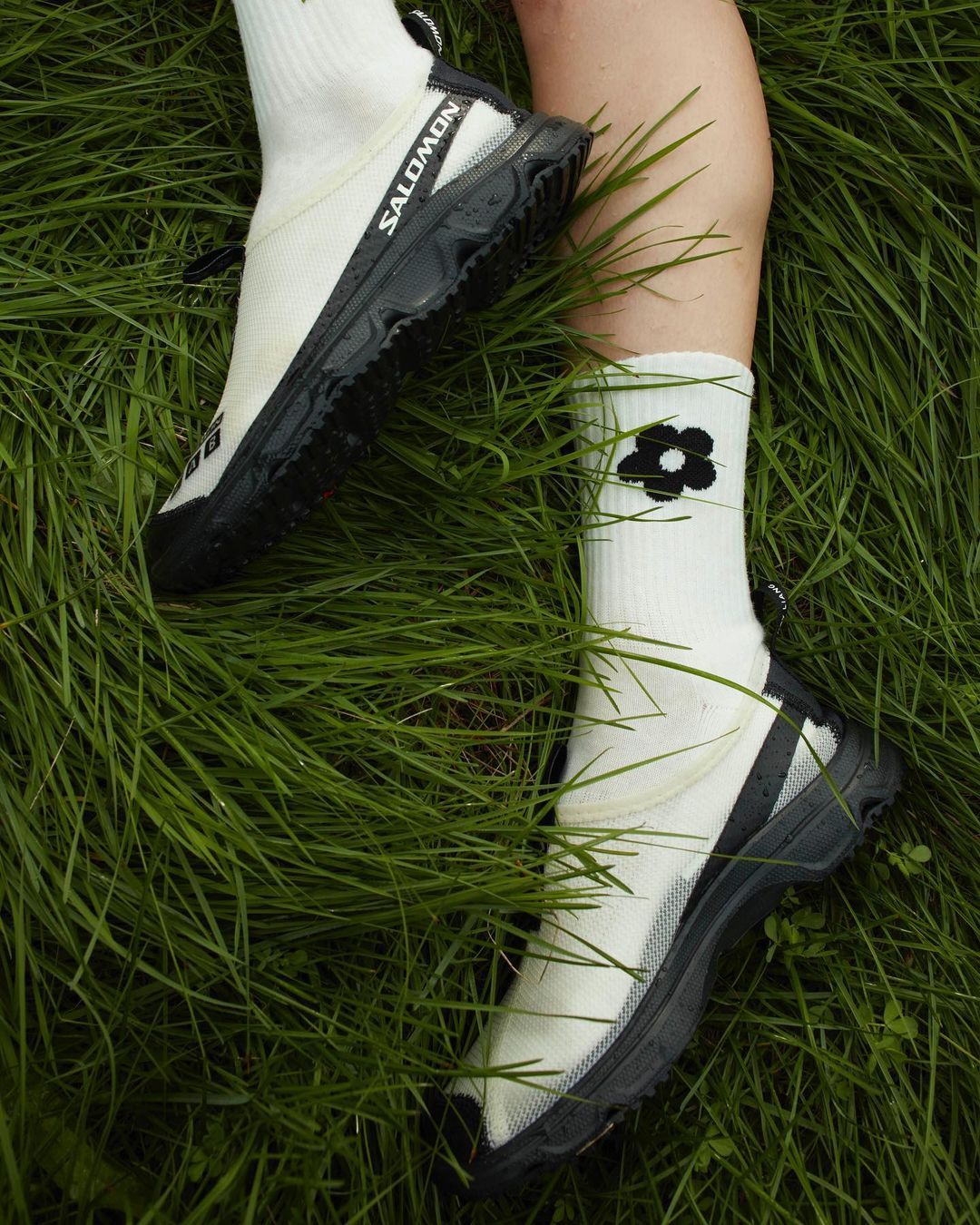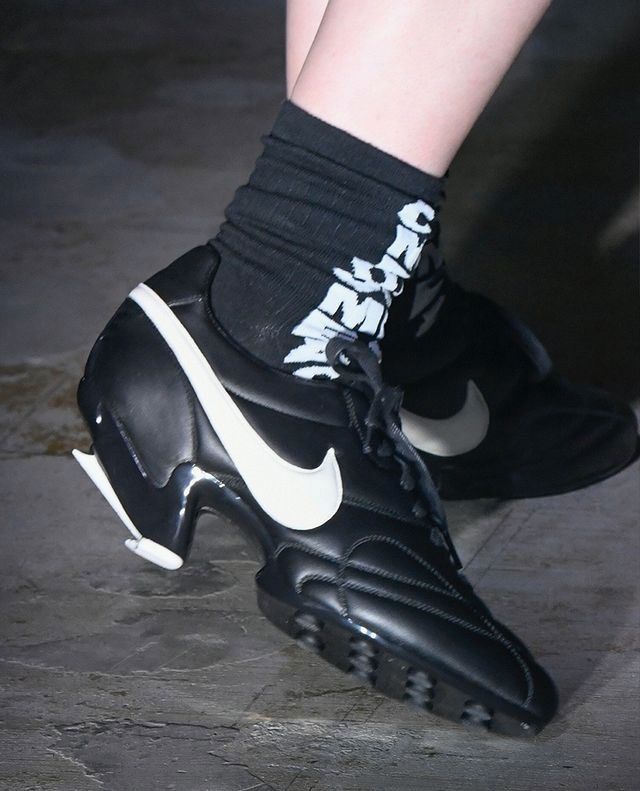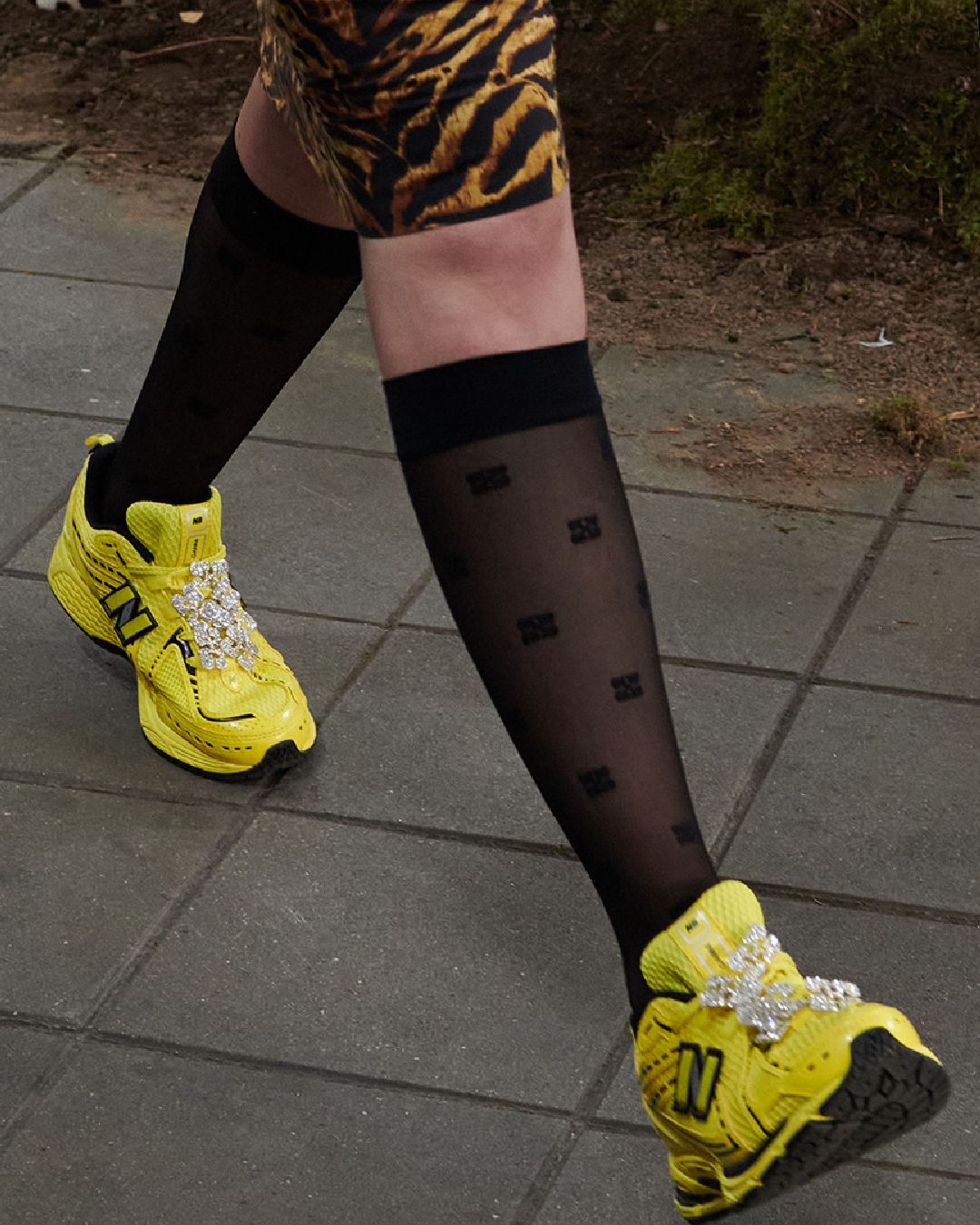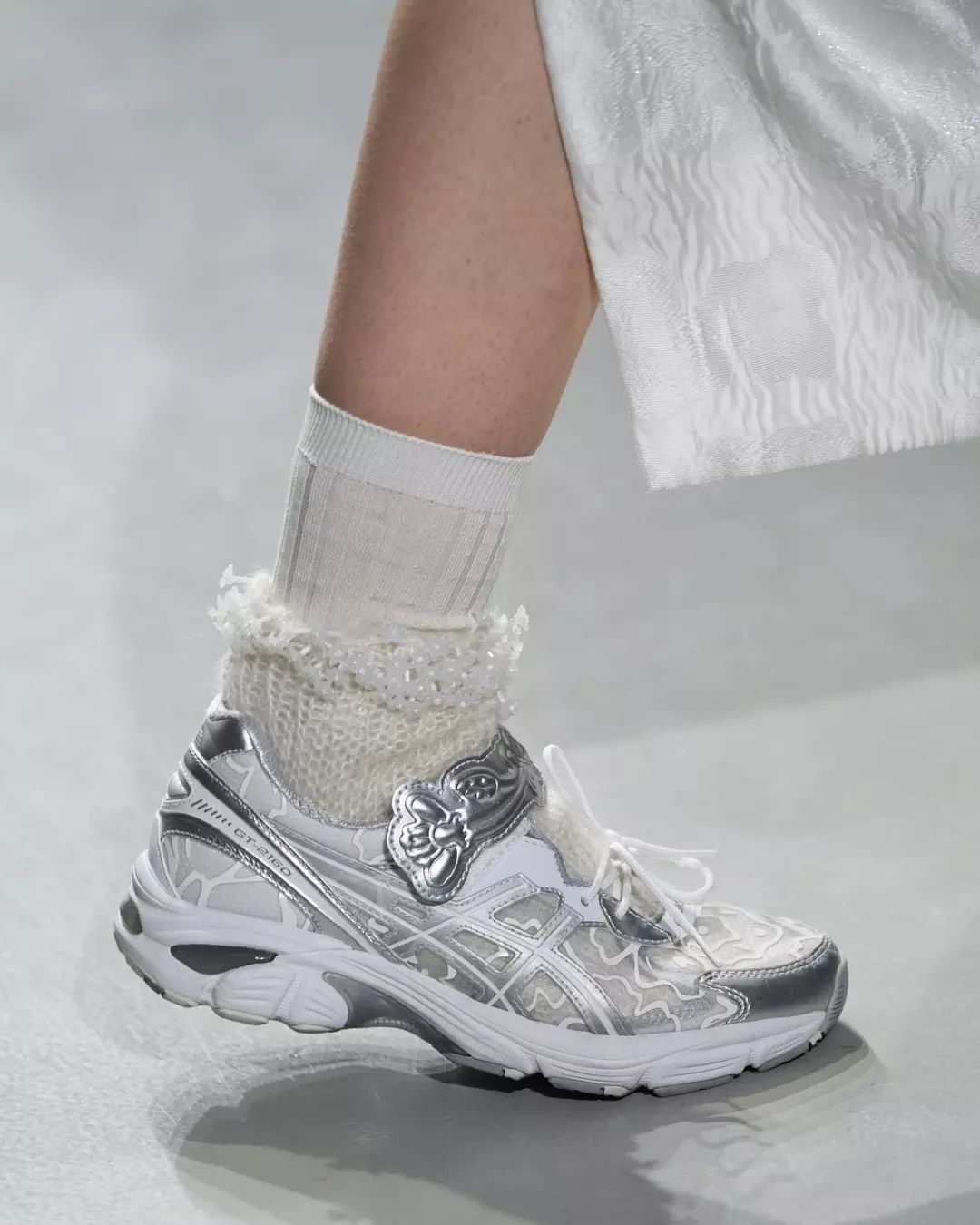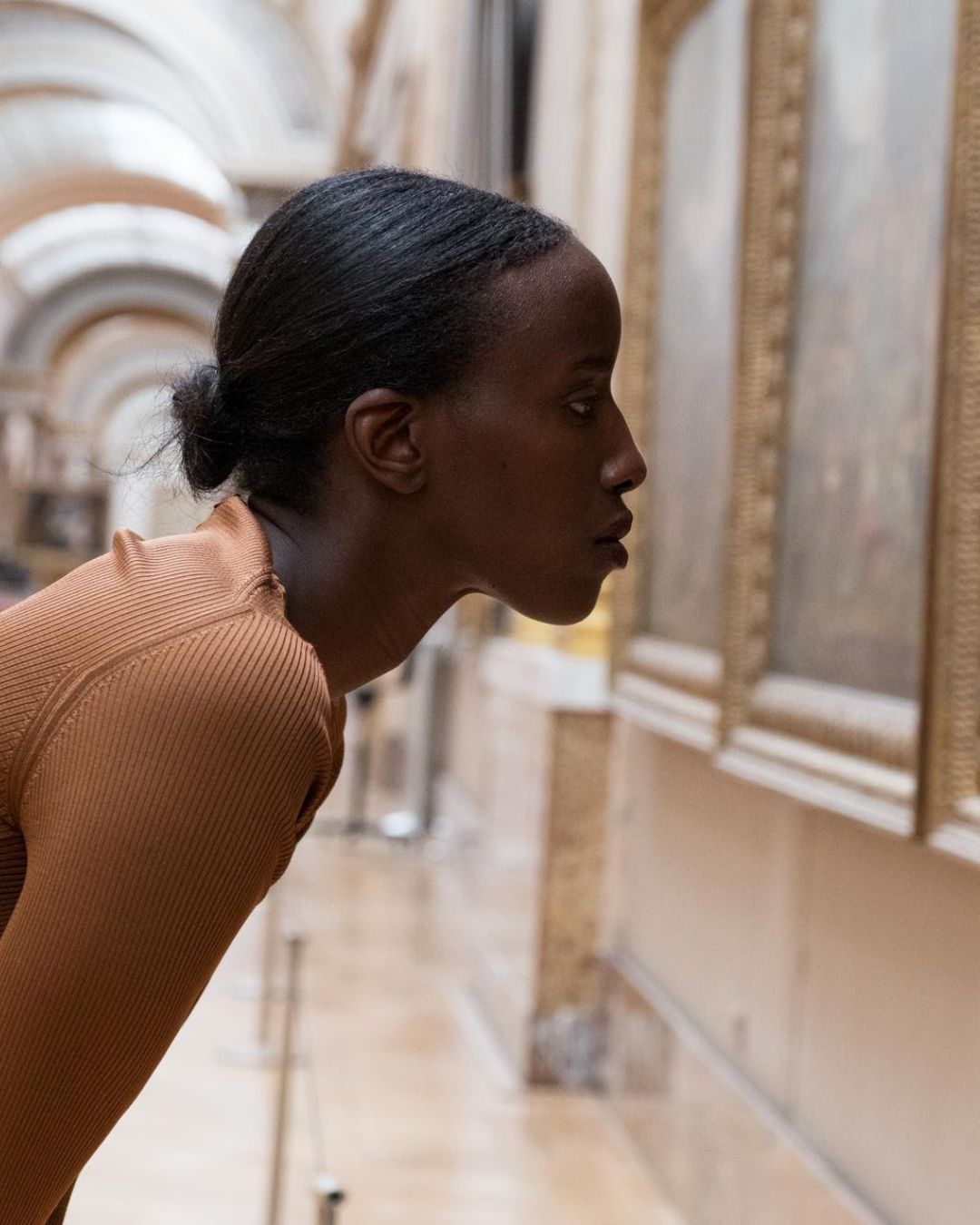
The unexpected boom of hyper-feminine sneakers The cute shoes challenging the male-dominated sneaker industry
«When a girl's room is messy, it's Sofia Coppola, it's 'hell is a teenage girl,' it's Lindsay Lohan in a 2000s movie, it's indie, it's hot,» quotes one of TikTok's top-rated audios. The year 2023 will be remembered in history as the year of the revenge of femininity as a right of expression, as all the pinks, bows, pearls and lip glosses we've seen triumph on the catwalk as well as in cinemas in recent months have conveyed a new movement for women's fashion through cute colours and compositions. Between the sweetness of lace details and the innocence of fru fru of bows, in the world of brands such as Blumarine, Simone Rocha, Heaven by Marc Jacobs and Molly Goddard being adorable is more important than being sexy. And surprisingly, the garment that most often conveys this aesthetic happens to be shoes, in the case of pumps and mary janes, and sneakers too. Fashion weeks are swarming with sneakers that one could describe as hyper-feminine, but the cute-ification (for lack of a better word) of shoes comes first and foremost from independent designers, a study in pink created by girls for girls, aiming precisely to romanticise within a male-dominated world, the second sex imagery that has been mocked the most over the years.
«I often tried to hide this aesthetic because it wasn't accepted in the sneaker industry,» says Caterina Mongillo, a sneaker designer who went viral online thanks to her ultra-feminine customisations of New Balance, adidas and Puma limited editions. «The transition to a more feminine aesthetic [in the sneaker industry] was very hard-fought because at first it was not considered credible.» According to Mongillo, who contributed for years as a researcher and project manager at adidas and is now working as a freelance consultant, hyper-feminine sneakers can now be easily found on the catwalk thanks to all of the subcultures that loved them before the fashion industry. Until recently, they were snubbed by male sneakerheads, but now more men are starting to take an interest in their adorable designs. «I also make these shoes for guys who are into streetwear,» adds Mongillo, «and eclectic fashion.»
Judging by online searches, cute-ified sneakers seem to have popped up in mainstream fashion only in the last few months, yet their first appearence dates back to the 1980s and 1990s, in Japan's Harajuku kawaii style district. In the West, the first to bring this style to the catwalk were Simone Rocha, with her ultra chunky SS21 ballet shoes, and Rei Kawakubo for FW21, in collaboration with Nike for Comme des Garçons. Then there was Sandy Liang, whose pinks and signature flower logo have cleared the way for hyper-femininity in gorpcore this spring, together with Salomon, and Kiko Kostadinov, whose womenswear, under the artistic direction of Laura and Deanna Fanning, continues to fully reflect the grunge-yet-graceful imagery of Gen Z, in a multi-year collaboration with Asics that's about to become a brand on its own. After Salomon's collaboration with Liang last spring, the hyper-feminine sneaker style returned under Asics' guidance over the summer, when the Japanese brand unveiled its second collaboration with Danish designer Cecilie Bahnesen, a reinterpretation of the GT-2160 in silver and black embellished with mesh details. Ganni's second collaboration with New Balance also debuted on the catwalk last month, dazzling Copenhagen Fashion Week FW23. With laces covered in sequins, white and yellow sneakers glittered at the models' feet with every step, confirming an unusual drive, on the part of a brand like New Balance, born in Massachusetts and come to prominence through dadcore, towards an extremely feminine aesthetic.
From balletcore to Ganni's latest collaboration with New Balance, Mongillo knows the history of femininity in fashion like the back of her hand. «Current social cues always influence me,» the designer explains about the rise of hyper-feminine sneakers, pointing out that although more and more brands are indeed experimenting with pearls and embroidered lace, it's the subcultures that are the real starting point of this glittery phenomenon. «Back in 2020, driving the hyper-femininity trend were balletcore and cottage core,» she explains, tracing the path that pink bows took before landing in ateliers through TikTok's most famous aesthetics. «Brands like Prada and Miu Miu have made femininity more acceptable in the industry, but what inspires it has always been subcultures, aesthetics and independent designers, like Mila Sullivan, Agata Panucci, and Benulus. They are creating an online community, and in my opinion that's the real movement, not so much the brand, but the people who formed the aesthetic.»
Today, Mongillo customises up to ten sneakers a month and receives orders from all over the world, from Brazil to Korea, from the US to Japan. At first glance, a pair of sneakers like the ones Mongillo creates, adorned in shiny pearls, satin ruffles reminiscent of whipped cream, shimmering glitter and innocent little bows may seem like nothing more than a new fad, a new aesthetic destined to an ephemeral life. To recognise the emotional baggage that hyper-feminine sneakers carry one needs to observe, first and foremost, the stunned gaze of a girl seeing them for the first time. They're not a diamond necklace, nor a pair of Manolo Blahniks, yet these adorable designs evoke in each of us the same expression of wonder that paints itself on a child's face as she unwraps a gift she so desperately wanted. Just as in Lindsey Lohan's y2k film, as in Sofia Coppola's cocoon-y yet extremely true-to-life cinematography, designers like Simone Rocha, Sandy Liang, Laura and Deanna Fanning add pink, but it is the nostalgia factor the one playing tricks.



















































